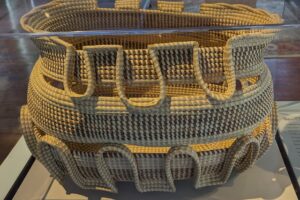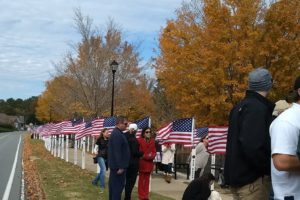The start of the conflict in Vietnam started in the mid-1950s, but the Marines first waded ashore in March 1965. The SEALs were probably first sent there in 1965 too. For them, this was a jungle war. Camouflaging their faces to keep them out of sight earned them the nickname of Men With Green Faces from the Viet Cong. After the end of the war in the mid-1970s, the SEALs started going on other missions. If you’re like us, you may remember hearing about these missions but don’t remember the details!

Vietnam War

The SEALs fought in the deltas, the rice paddies, and the rivers. Quickly adapting to enemy practices, they used small teams of 4 to 6 men, light weapons, and special equipment to hunt down and capture the intelligence they needed to locate and destroy key personnel of the Viet Cong command structure.


Support for the SEALs came from many sources: Army artillery, Air Force close air-support, medical evacuation by Army unarmed helicopters, and naval gunfire from off-shore ships. Two support units that were really appreciated were the Brown Water Navy and the Seawolf helicopter gunships.

The “Seawolves” were an all-volunteer U.S. Navy helicopter squadron to support Naval Special Warfare and Mobile Riverine Forces. They functioned effectively in a quick reaction, close air-support role.
As we were walking through this exhibit on the Vietnam War, Barney saw these two pieces of firepower that he remembered fondly from his days shooting off everything that went Boom! when he was in the Marine Corps.


Such “fond” memories for him.
cold war
While forces were being deployed in Southeast Asia, the ongoing tension from the Cold War between the United States (and our allies) and the USSR was going on from the end of WWII in 1945 to 1990. During this time, the U.S. military developed the Special Atomic Demolition Munition (SADM) for use in Soviet-occupied Western Europe to prevent the Soviets from acquiring critical assets or for crippling any Soviet invasion force. This was new information for us!

SEALs trained in parachuting, scuba diving, and even skiing with the SADM on their backs for high-risk tactical strikes against key infrastructure, including power plants, rail lines, bridges, and dams. To be successful, the SEALs would have to infiltrate behind enemy lines, sneak up on an enemy location while carrying the bulky weapon, set it, wait for it to explode, and then return to a friendly, or unoccupied, NATO nation. Seems like they would have been affected by the radiation.

hostage rescue in Iran – 1979


The rest of the forces quickly left Iran, and President Carter publicly took responsibility for the mission failing instead of blaming the military. Good for him.



UDTs decommissioned – 1983
During WWII, thirty 100-man Underwater Demolition Teams were formed, but only 4 teams survived the postwar period. These 4 team were reorganized on the West and East Coasts under Amphibious Forces Pacific and Atlantic. After the Korean War, they were decommissioned and renamed.

In 1983, all UDTs were decommissioned and re-designated SEAL & SEAL Delivery Vehicle Teams (SDVT). Now it’s all SEALs.
Grenada – 1983

The goal was to oust the People’s Revolutionary Government, protect the U.S. citizens, and restore a lawful government. In 8 days, all military objectives had been secured, and hostilities were declared over on the 9th day.

Bolovia – 1987


Naval Special Warfare has a long history of action in Central and South America. Navy SEALs took part in operations attempting to capture such notable guerrilla warfare leader Che Cuevara and drug lord Pablo Escobar.
Gulf operation for Iranian oil fields – 1987
The two operations of Earnest Will and Prime Chance were intertwined, but Prime Chance was a secret operation. Earnest Will was the widely publicized reaction to Kuwaiti pleas for help

Operation Earnest Will was the largest naval convoy operation since WWII. This was the first tactical operation of the U.S. Special Operations Command that involved Navy SEALs, Special Boat Units, and 160th Special Operations Aviation Regiment (Airborne) (“Nightstalkers”) aviators all working together.
Operation Prime Chance lasted almost 2 years and had Army helicopters flying at night, slipping to and from navy frigates’ and destroyers’ flight decks, and from leased barges, under the cover of darkness on search-and-destroy missions. The helicopter pilots often flew some 30 feet above the water and became the first to use night vision goggles and forward-looking infrared devices in combat. Navy SEALs and explosive ordinance disposal personnel also operated from the barges.


After Operation Praying Mantis, Iran backed off from engaging the U.S. military.

Panama invasion – 1989



The mission at the airport didn’t go so well. Already behind schedule when the 48 SEALs landed, they came under withering fire from the Panamanian Defense Forces stationed there. While Noriega’s plane was eventually destroyed, 4 SEALs died and many more were wounded.


So what happened to Noriega? Here’s the info from Wikipedia.
“Military operations continued for several weeks, mainly against military units of the Panamanian army. Noriega remained at large for several days, but realizing he had few options in the face of a massive manhunt and a $1 million reward for his capture, he obtained refuge in the Vatican diplomatic mission in Panama City. The U.S. military’s psychological pressure on him and diplomatic pressure on the Vatican mission, however, was relentless, as was the playing of loud rock-and-roll music day and night in a densely populated area. The report of the Office of the Chairman of the Joint Chiefs of Staff claimed that the music was used principally to prevent parabolic microphones from being used to eavesdrop on negotiations, and not as a psychological weapon based around Noriega’s supposed loathing of rock music. Noriega finally surrendered to the U.S. military on 3 January 1990. He was immediately flown to the U.S.”
Desert Shield & Desert Storm – 1990 & 1991

Here’s some background from Wikipedia:
Desert Shield
“On 2 August 1990 the Iraqi Army invaded and occupied Kuwait [because of oil pricing and production disputes], which was met with international condemnation and brought immediate economic sanctions against Iraq by members of the UN Security Council. Together with the UK prime minister Margaret Thatcher, American President George H.W. Bush deployed US forces into Saudi Arabia, and urged other countries to send their own forces to the scene. An array of nations joined the coalition, forming the largest military alliance since WWII. The great majority of the coalition’s military forces were from the US, with Saudi Arabia, the United Kingdom and Egypt as leading contributors, in that order. Kuwait and Saudi Arabia paid around US$32 billion of the US$60 billion cost.
“The war marked the introduction of live news broadcasts from the front lines of the battle, principally by the US network CNN.
Desert Storm
“The initial conflict to expel Iraqi troops from Kuwait began with an aerial and naval bombardment on 17 January 1991, continuing for five weeks. This was followed by a ground assault on 24 February. This was a decisive victory for the coalition forces, who liberated Kuwait and advanced into Iraqi territory. The coalition ceased its advance and declared a ceasefire 100 hours after the ground campaign started. Aerial and ground combat was confined to Iraq, Kuwait, and areas on Saudi Arabia’s border. Iraq launched Scud missiles against coalition military targets in Saudi Arabia and against Israel.”

The conflict name was changed to Operation Desert Storm on January 17, 1991, when open combat started. SEALs captured the first Iraqi Prisoners of War when they assaulted 9 Kuwaiti oil platforms on January 19. On February 23, a 6-man SEAL team launched a mission to deceive the Iraqi military into thinking an amphibious assault on Kuwait by coalition forces was imminent. They set off explosives and placed marking buoys 500 meters off the Kuwaiti coast. This successful mission diverted Iraqi forces east, away from the true coalition offensive.

Somalia – 1992

The U.S. entered Somalia in December 1992 to stop the imminent starvation of hundreds of thousands of people. In August 1993, a 4-man Naval Special Warfare Development Group sniper team was sent to Mogandishu to join the Rangers in search of warlord Mohammed Farrah Aidid who was responsible for killing and mutilating multiple Pakistani peace keepers.

The deaths of the locals inevitably contributed to the hostility toward the U.S. soldiers whose bodies were seen being dragged through the streets.
So what happened to Aidid? On July 24, 1996, he and his men clashed with the forces of former allies Ali Mahdi Muhammad and Osman Ali Atto, and Aidid suffered a gunshot wound in the battle. He later died from a heart attack on August 2, either during or after surgery to treat his injuries.
Haiti – 1994

The invasion had been planned using a forcible entry (some of the main force was just hours from reaching Haiti and some had already infiltrated), but it was averted at the very last minute. An agreement had been reached with the leaders of Haiti to step down and leave the country. The elected officials, including President Aristide, were allowed to return.

Bosnia – 1997


In February 1998, Navy SEALs apprehended Blagoje Simic, called “the Hitler of Bosnia.” While they successfully apprehended him, they were delayed in leaving by an impromptu paramilitary checkpoint. The SEALs rammed the checkpoint barricade with their car and then swapped cars in the countryside, speeding to a secret airfield where Simic was picked up and flown to The Hague to await trial for crimes against humanity.
Simic was sentenced to prison for 17 years, an appeals court reduced the time to 15 years, and in 2007 Simic was transferred to the United Kingdom to serve his term.
Want to know more about the current life of the Navy SEALs after 9/11? Start reading the next post.




